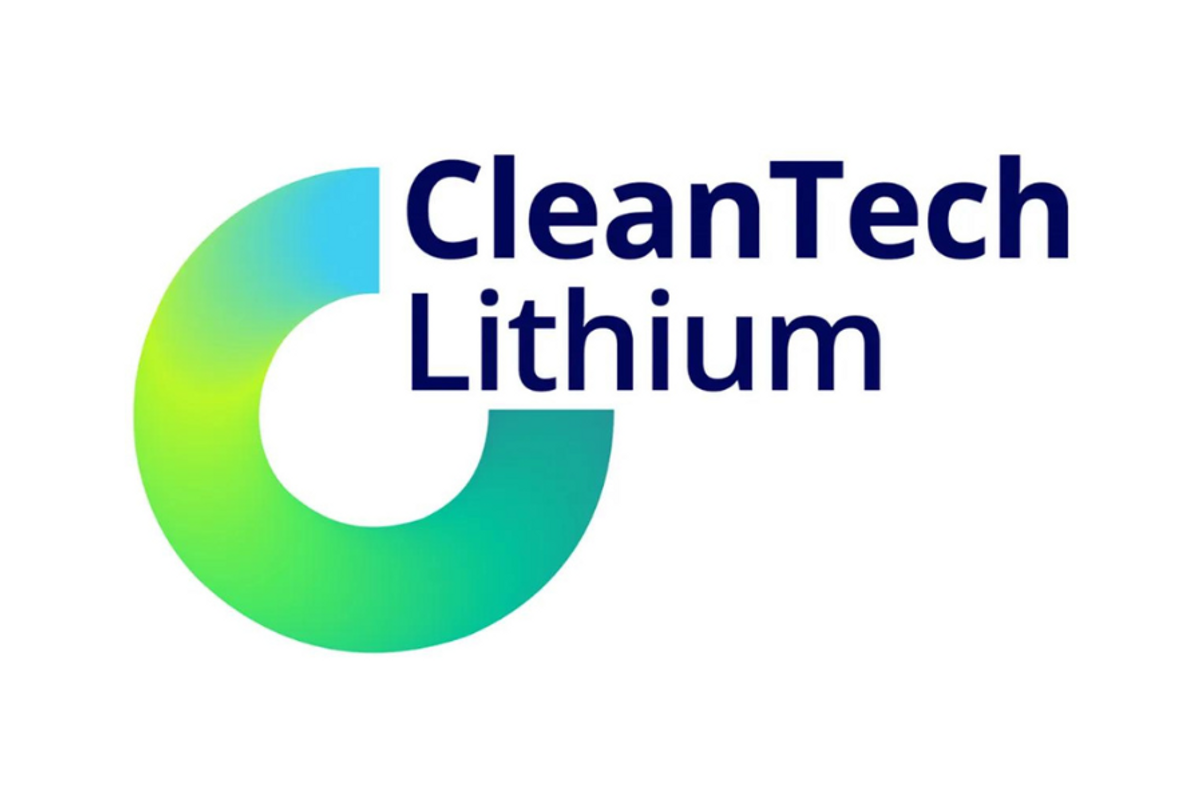
December 20, 2022
CleanTech Lithium PLC (AIM:CTL), an exploration and development company advancing the next generation of sustainable lithium projects in Chile, is pleased to announce that an application has been filed with the OTC Markets Group for the Company's Ordinary Shares to be publicly cross traded on the OTCQX Market ("OTCQX") based in the United States ("U.S.").
Established in 2007, the OTCQX, also called "The OTCQX Best Market," is recognised by the U.S. Securities and Exchange Commission (the "SEC") as an "Established Public Market." The OTCQX is a leading market for U.S. companies and for international companies already listed on a qualified international stock exchange. As a verified market with efficient access to U.S. investors, OTCQX enables global companies to better access the support of U.S. investors, distribute information in the U.S. public markets and through that build shareholder value with the goal of enhancing liquidity and achieving a fair valuation.
The Company believes that having its Ordinary Shares traded on the OTCQX will provide enhanced investor benefits, including easier trading access for certain investors located in the U.S., and greater liquidity due to a broader geographic pool of potential investors. Through trading on the OTCQX, the Company will be able to engage with a network of U.S. investors, data distributors and media partners, ensuring that U.S. investors have access to the same level of information and disclosure that is available to investors in the United Kingdom, but through U.S.-facing platforms and portals. In addition, the OTCQX cross-trading facility will provide U.S. based investors with the ability to access CleanTech Lithium's Ordinary Shares in U.S. dollars during U.S market hours.
The Company has engaged the corporate securities law firm of Galanopoulos & Company as its OTCQX Sponsor. A market maker and Investor Relations company will be appointed in the U.S. to support the promotion of the Company and trading on the OTCQX.
The process to enlist on the OTCQX is expected to take approximately 8 weeks, and trading on the market will have no impact on CleanTech Lithium's existing Ordinary Shares which will continue to trade on the AIM Market of the London Stock Exchange, and no new Ordinary Shares will be issued as part of the cross trade on the OTCQX. CleanTech Lithium will continue to rely on the announcements and disclosures it makes to the London Stock Exchange and will have no Sarbanes-Oxley or SEC reporting requirements in connection with the proposed cross-trading on the OTCQX.
To qualify for the OTCQX, CleanTech Lithium will demonstrate that it meets high financial standards, follows best practice corporate governance and that it complies with applicable securities laws.
The Company will provide further updates as and when its Ordinary Shares are admitted to trading on the OTCQX.
U.S. Inflation Reduction Act:
The recent signing of the Inflation Reduction Act ("IRA") in the U.S. means that by 2026, 80% of minerals in Electric Vehicle ("EV") batteries will need to be sourced from the U.S. or a country which has a free trade agreement ("FTA") with the U.S.. Chile is the only major producer of battery grade lithium carbonate/hydroxide that has a FTA with the U.S. so this places CleanTech Lithium in a favourable place to sell its future lithium products into the U.S.. The IRA provides financial incentives in the U.S. to companies that can increase the security of supply of battery minerals. CleanTech Lithium intends to open discussions with U.S. authorities as to whether such financial incentives will be available to developing lithium producers in Chile that plan to be part of the lithium supply chain into the U.S..
Contemplated ASX Listing:
The Company is also continuing to consider an additional potential listing on the Australian Stock Exchange ("ASX") in 2023 and the Company's CEO has recently completed a second visit to Australia over the past week to undertake further exploratory discussions with various parties, supported by the Company's joint brokers, Fox-Davies Capital and Canaccord Genuity. Further updates will be provided to the market once the CleanTech Lithium Board has considered the merits of an additional listing on ASX and the process required to achieve that.
Adlo Boitano, Chief Executive of CleanTech Lithium, said: "We believe that dual trading on the OTC and AIM markets will be another important step for the CleanTech Lithium corporate platform, supplemented by recent listings on various stock exchanges in Germany, as previously announced. Dual trading on OTCQX will, we believe, serve to diversify the share register and increase exposure to a broader range of investors, whether U.S. based or ESG-focused. This action comes on the back of an already increased level of interest from U.S. investors as a result of the various meetings with such investors during the recent Placing process and also during virtual Mining conferences, including the Swiss Mining Institute Virtual Conference in early November 2022, where U.S. investors encouraged the Company to also trade its shares on OTCQX as a means of allowing them to invest through that route.
"Over the past year, we have made very good progress on many fronts and the OTCQX onboarding will allow U.S. based investors to trade in CleanTech Lithium shares. Given the incentives potentially available to companies such as CleanTech Lithium following the Inflation Reduction Act, we believe U.S. based investors will understand the very real benefits of this for CleanTech Lithium and we would welcome their investment in our Company.
"In the meantime, our Board continues to consider the merits of an additional listing on ASX and we shall update the market in the coming months on our intentions in that regard."
Click here for the full article
This article includes content from Cleantech Lithium, licensed for the purpose of publishing on Investing News Australia. This article does not constitute financial product advice. It is your responsibility to perform proper due diligence before acting upon any information provided here. Please refer to our full disclaimer here.

Sign up to get your FREE
CleanTech Lithium Investor Kit
and hear about exciting investment opportunities.
- Corporate info
- Insights
- Growth strategies
- Upcoming projects
GET YOUR FREE INVESTOR KIT
The Conversation (0)
13 April
CleanTech Lithium
Investor Insight
Executing a well-defined project development strategy for its lithium assets and advancing Direct Lithium Extraction (DLE), CleanTech Lithium is poised to become a key player in an expanding batteries market.
Overview
CleanTech Lithium (AIM:CTL,FWB:T2N) is a resource exploration and development company with four lithium assets with an estimated 2.72 million tons (Mt) of lithium carbonate equivalent (LCE) in Chile, a world-renowned mining-friendly jurisdiction. The company aims to be a leading supplier of ‘green lithium’ to the electric vehicle (EV) market, leveraging direct lithium extraction (DLE) – a low-impact, low-carbon and low-water method of extracting lithium from brine.
Lithium demand is soaring as a result of a rapidly expanding EV market. One study estimates the world needs 2 billion EVs on the road to meet global net-zero goals. Yet, the gap between supply and demand continues to widen. As the world races to secure new supplies of critical minerals, Chile has emerged as an ideal investment jurisdiction with mining-friendly regulations and a skilled local workforce to drive towards a clean green economy. Chile is already the biggest supplier of copper and second largest supplier of lithium.
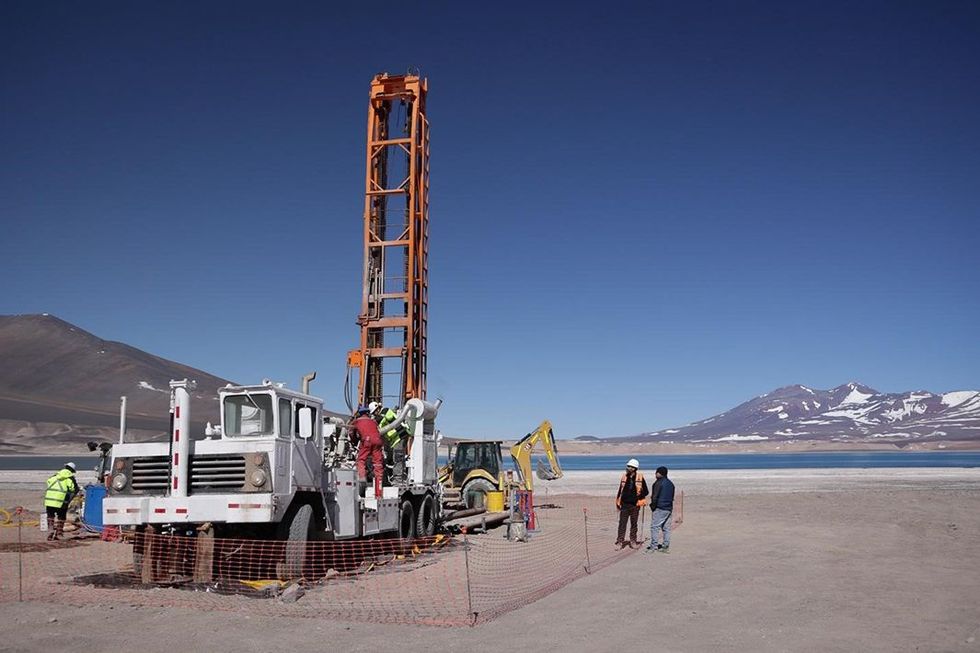
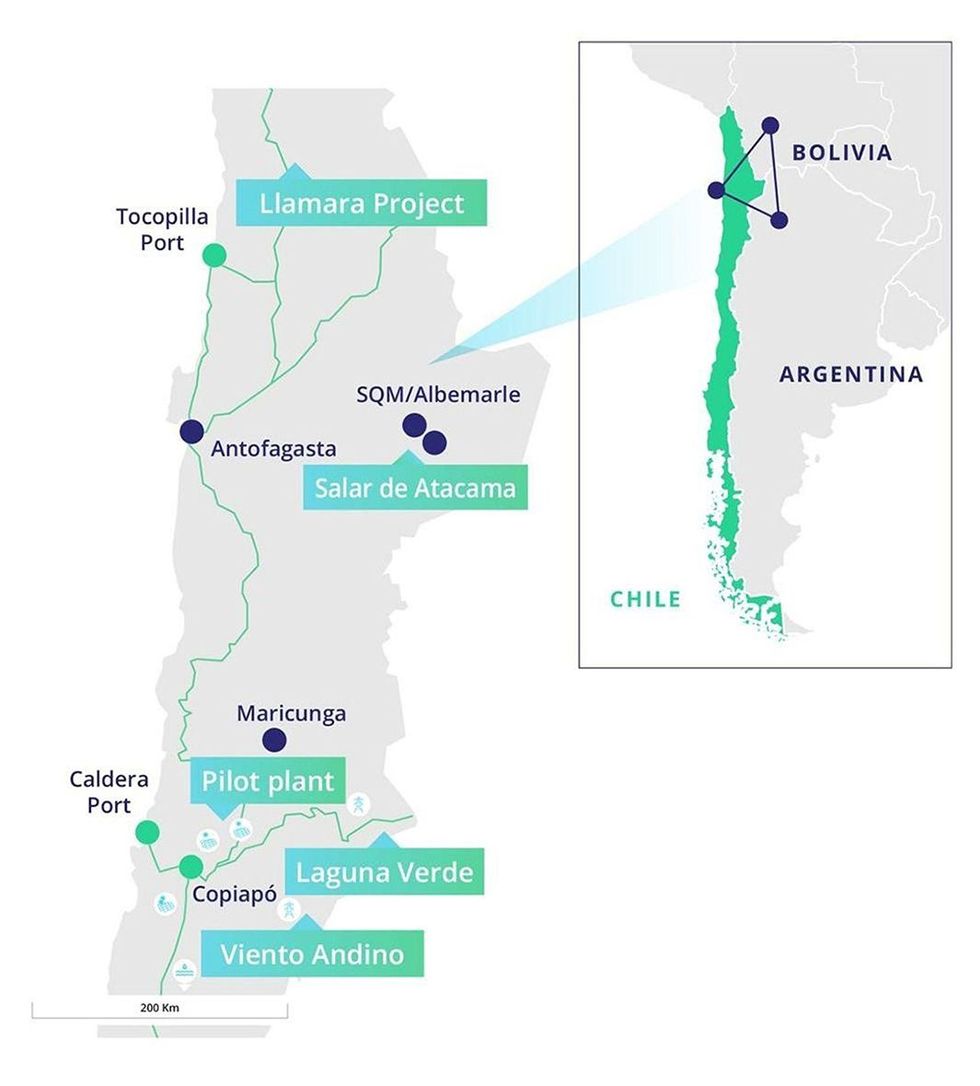
With an experienced team in natural resources, CleanTech Lithium holds itself accountable to a responsible ESG-led approach, a critical advantage for governments and major car manufacturers looking to secure a cleaner supply chain.
Laguna Verde is at pre-feasibility study stage targeted to be in ramp-up production from 2027. Laguna Verde has a JORC resource estimate of 1.8 Mt of lithium carbonate equivalent (LCE) while Viento Andino boasts 0.92 Mt LCE, each supporting 20,000 tons per annum (tpa) production with a 30-year and 12-year mine life, respectively. The latest drilling programme at Laguna Verde finished in June 2024, results from which will be used to convert resources into reserves.
The lead project, Laguna Verde, will be developed first, after which Veinto Andino will follow suit using the design and experience gained from Laguna Verde, as the company works towards its goal of becoming a significant green lithium producer serving the EV market.
The company is carrying out the necessary environmental impact assessments in partnership with the local communities. The indigenous communities will provide valuable data that will be included in the assessments. The Company has signed agreements with the three of core communities to support the project development.
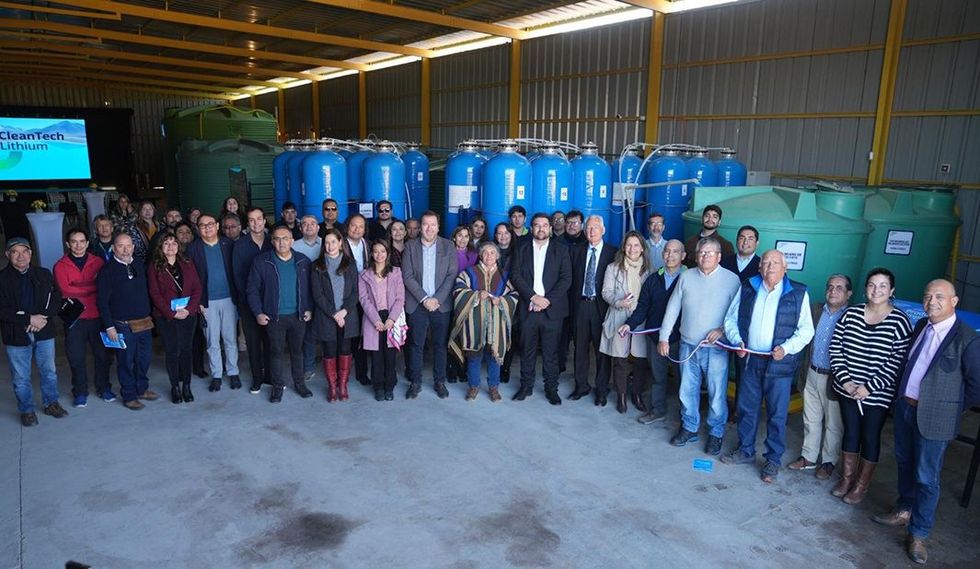
DLE Pilot Plant Inauguration event held in May 2024 with local stakeholders and indigenous communities in attendance
The company also has two prospective exploration assets - the Llamara project and Salar de Atacama/Arenas Blancas project. Llamara project is a greenfield asset in the Antofagasta region and is around 600 kilometers north of Laguna Verde and Veinto Andino. The project is located in the Pampa del Tamarugal basin, one of the largest basins in the Lithium Triangle.
Salar de Atacama/Arenas Blancas comprises 140 licenses covering 377 sq km in the Salar de Atacama basin, one of the leading lithium-producing regions in the world with proven mineable deposits of 9.2 Mt.
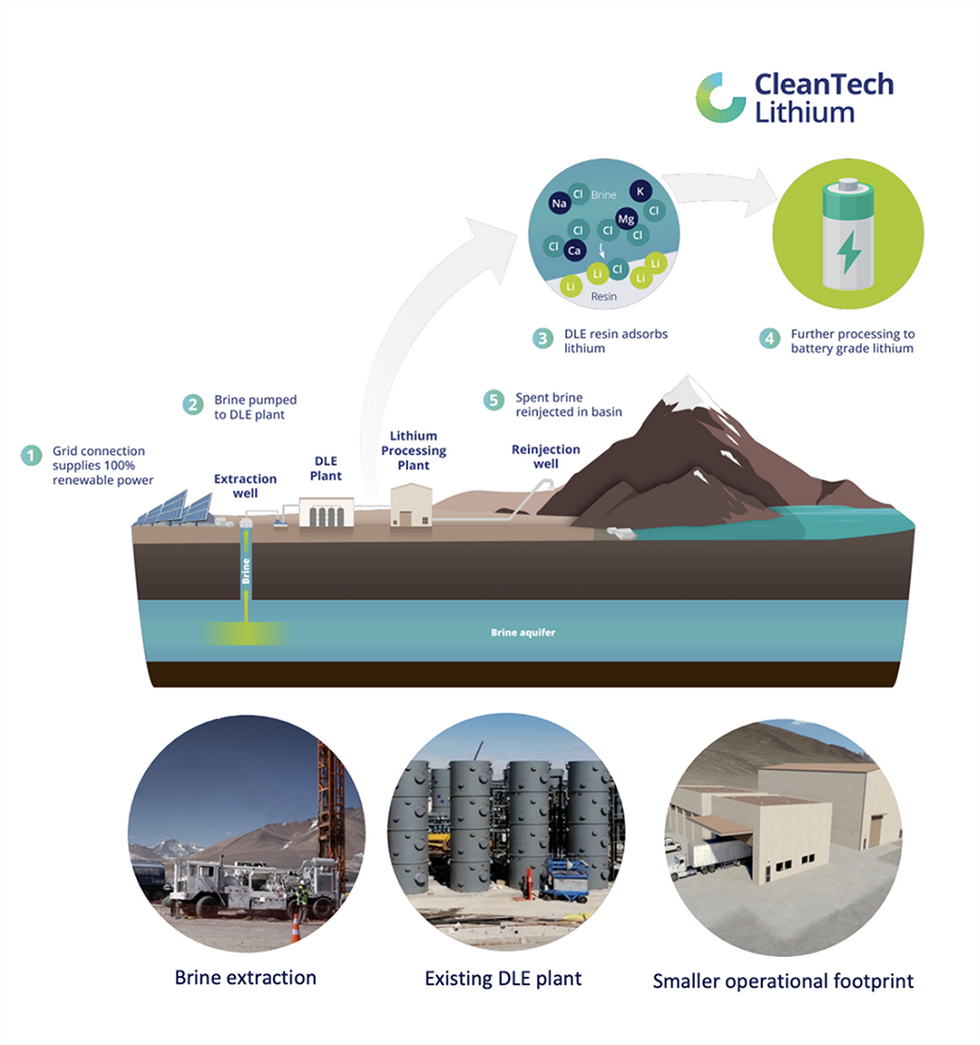
CleanTech Lithium is committed to an ESG-led approach to its strategy and supporting its downstream partners looking to secure a cleaner supply chain. In line with this, the company plans to use renewable energy and the eco-friendly DLE process across its projects. DLE is considered an efficient option for lithium brine extraction that makes the least environmental impact, with no use of evaporation ponds, no carbon-intensive processes and reduced levels of water consumption. In recognition, Chile’s government plans to prioritize DLE for all new lithium projects in the country.
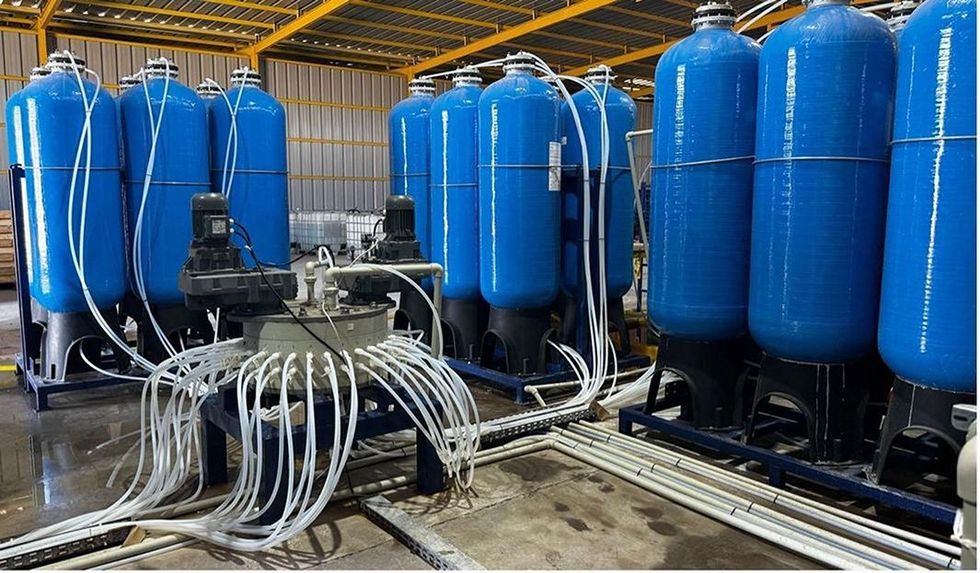
CleanTech Lithium’s pilot DLE plant in Copiapó was commissioned in the first quarter of 2024. To date, the company has completed the first stage of production from the DLE pilot plant producing an initial volume of 88 cubic metres of concentrated eluate – the lithium carbonate equivalent (LCE) of approximately one tonne over an operating period of 384 hours with 14 cycles. Results show the DLE adsorbent achieved a lithium recovery rate of approximately 95 percent from the brine, with total recovery (adsorption plus desorption) achieving approximately 88 percent. The Company’s downstream conversion process is successfully producing pilot-scale samples of lithium carbonate . As of January 2025, the Company is producing lithium carbonate from Laguna Verde concentrated eluate at the downstream pilot plant - recently proven to be high purity (99.78 percent). Click for highlights video.
CTL’s experienced management team, with expertise throughout the natural resources industry, leads the company toward its goal of producing green lithium for the EV market. Expertise includes geology, lithium extraction engineering and corporate administration.
Company Highlights
- CleanTech Lithium is a lithium exploration and development company with four notable lithium projects in Chile and a combined total resource of 2.72 million tonnes JORC estimate of lithium carbonate equivalent.
- Chile is one of the biggest producers of lithium carbonate in the world and the Chilean Government has prioritized innovative technologies such as DLE for new project development
- The Company leverages DLE, an efficient method for extracting lithium brine that aims to minimize environmental impact, reduce production time and costs, resulting in high-purity, battery-grade lithium carbonate
- The Company is targeting a dual-listing on the ASX in Q1 2025.
- CleanTech Lithium’s flagship project, Laguna Verde is at the Pre-Feasibility Stage, once completed, the Company looks to start substantive conversations with strategic partners.
- The Company has an operational DLE pilot plant in Copiapó, Chile producing an initial volume of 88 cubic meters of concentrated eluate, which is the lithium carbonate equivalent (LCE) of approx. one tonne, proving the Company’s capacity to produce battery-grade lithium with low impurities from its Laguna Verde brine project.
- In January 2025, the Company announced to the market the production of high purity lithium carbonate (99.78%)
- The Board consists of the former CEO of Collahuasi, the largest copper mine in the world, having held senior roles at Rio Tinto and BHP. In-country experience developing major commercial projects runs throughout the team.
- CleanTech Lithium’s operations are underpinned by an established ESG-focused approach - a critical priority for governments introducing regulations that require a cleaner supply chain to reach net-zero targets.
Key Projects
Laguna Verde Lithium Project
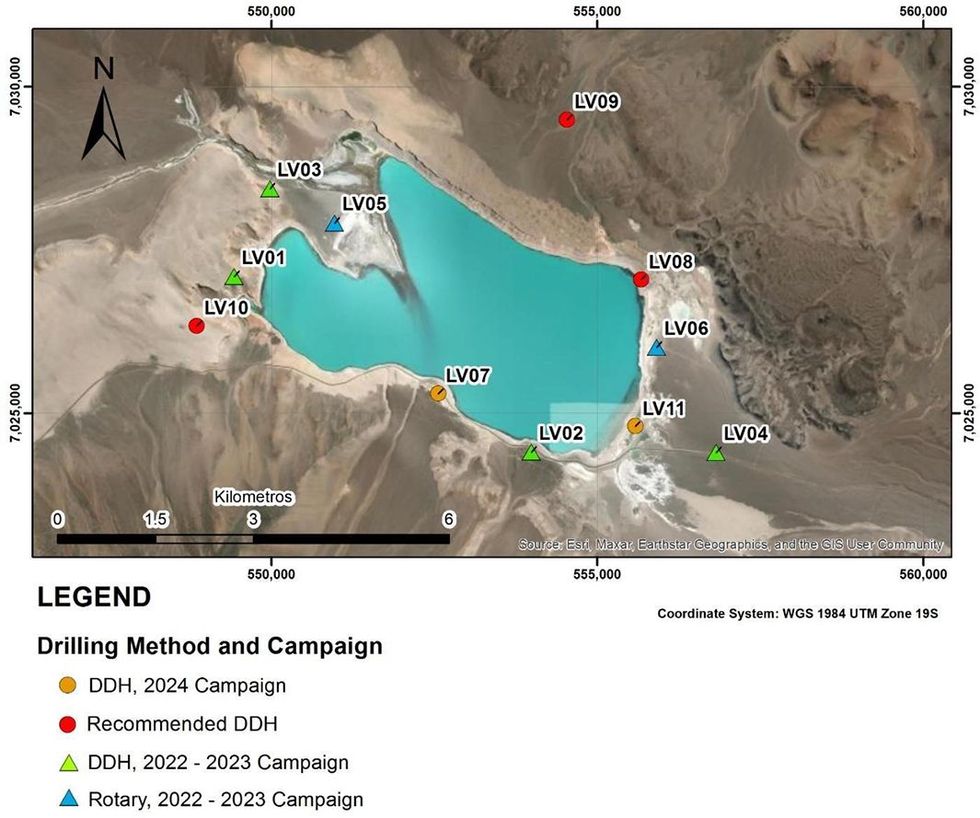
The 217 sq km Laguna Verde project features a sq km hypersaline lake at the low point of the basin with a large sub-surface aquifer ideal for DLE. Laguna Verde is the company’s most advanced asset.
Project Highlights:
- Prolific JORC-compliant Resource Estimate: As of July 2023, the asset has a JORC-compliant resource estimate of 1.8 Mt of LCE at a grade of 200 mg/L lithium.
- Environmentally Friendly Extraction: The company’s asset is amenable to DLE. Instead of sending lithium brine to evaporation ponds, DLE uses a unique process where resin extracts lithium from brine, and then re-injects the brine back into the aquifer, with minimal depletion of the resources. The DLE process reduces the impact on environment, water consumption levels and production time compared with evaporation ponds and hard-rock mining methods.
- DLE Pilot Plant: The pilot DLE plant in Copiapó, commissioned in the first quarter of 2024, has produced an initial volume of 88 cubic metres of concentrated eluate, which is the lithium carbonate equivalent (LCE) of approximately one tonne further confirming the company’s capacity to produce battery-grade lithium with low impurities from its Laguna Verde brine project.
- Scoping Study: Scoping study completed in January 2023 indicated a production of 20,000 tons per annum LCE and an operational life of 30 years. Highlights of the study also includes:
- Total revenues of US$6.3 billion
- IRR of 45.1 percent and post-tax NPV8 of US$1.8 billion
- Net cash flow of US$215 million
Viento Andino Lithium Project
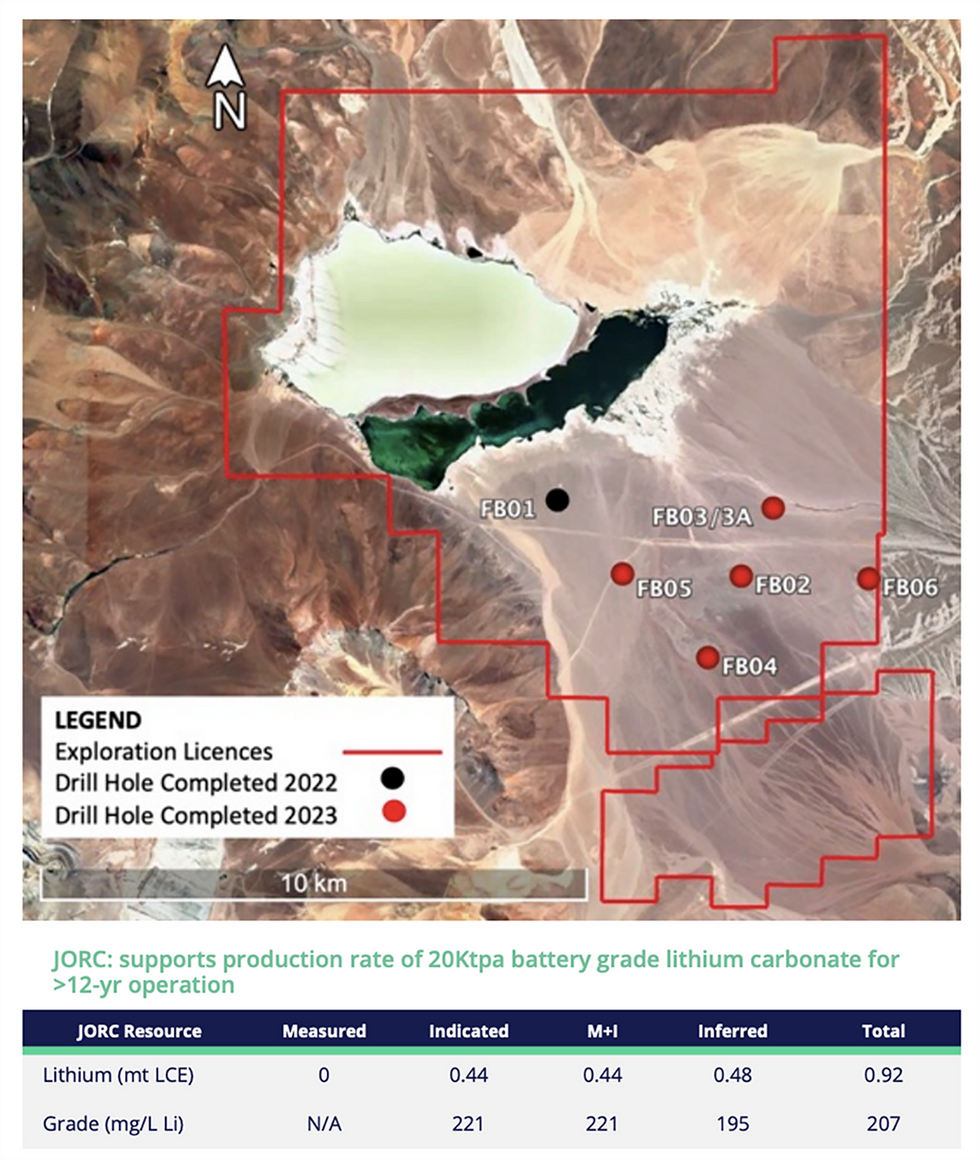
CleanTech Lithium’s second-most advanced asset covers 127 square kilometers and is located within 100 km of Laguna Verde, with a current resource estimate of 0.92 Mt of LCE, including an indicated resource of 0.44 Mt LCE. The company’s planned second drill campaign aims to extend known deposits further.
Project Highlights:
- 2022 Lithium Discovery: Recently completed brine samples from the initial drill campaign indicate an average lithium grade of 305 mg/L.
- JORC-compliant Estimate: The inferred resource estimate was recently upgraded from 0.5 Mt to 0.92 Mt of LCE at an average grade of 207 mg/L lithium, which now includes 0.44 million tonnes at an average grade of 221 mg/L lithium in the indicated category.
- Scoping Study: A scoping study was completed in September 2023 indicating a production of up to 20,000 tons per annum LCE for an operational life of more than 12 years. Other highlights include:
- Net revenues of US$2.5 billion
- IRR of 43.5 percent and post-tax NPV 8 of US$1.1 billion
- Additional Drilling: Once drilling at Laguna Verde is completed in 2024, CleanTech Lithium plans to commence further drilling at Viento Andino for a potential resource upgrade.
Llamara Lithium Project
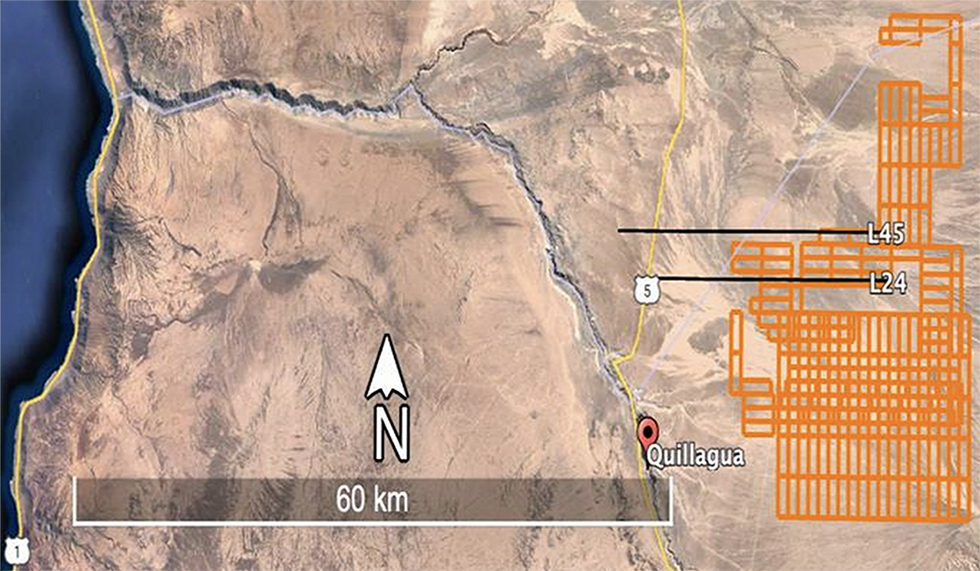
The Llamara project is one of the largest greenfield basins in the Lithium Triangle, covering 605 square kilometers in the Pampa del Tamarugal, one of the largest basins in the Lithium Triangle. Historical exploration results indicate blue-sky potential, prompting the company to pursue additional exploration.
Project Highlights:
- Promising Historical Exploration: The asset has never been drilled; however, salt crust surface samples indicate up to 3,100 parts per million lithium. Additionally, historical geophysics lines indicate a large hypersaline aquifer. Both of these exploration results indicate potential for significant future discoveries.
- Close Proximity to Existing Operations: The Llamara project is near other known deposits:
Arenas Blancas
The project comprises 140 licences covering 377 sq km in the Salar de Atacama basin, a known lithium region with proven mineable deposits of 9.2 Mt and home to two of the world’s leading battery-grade lithium producers SQM and Albermarle. Following the granting of the exploration licences in 2024, the Cleantech Lithium is designing a work programme for the project
The Board
Steve Kesler - Executive Chairman
Steve Kesler has 45 years of executive and board roles experience in the mining sector across all major capital markets including AIM. Direct lithium experience as CEO/director of European Lithium and Chile experience with Escondida and as the first CEO of Collahuasi, previously held senior roles at Rio Tinto and BHP.
Ignacio Mehech – CEO and Director
Ignacio Mehech brings over a decade of senior leadership experience in the lithium and mining sectors. During his seven-year tenure at Albemarle—the world’s largest producer of battery-grade lithium—he spent the last three years as Country Manager in Chile, overseeing a workforce of 1,100 and managing critical relationships with government, indigenous communities, and other key stakeholders. Mehech brings deep expertise in lithium project development, regulatory engagement, and sustainability. He has led high-profile engagements with global investors, customers, NGOs, analysts, scientists, and international governments. He also played a key leadership role in the El Abra copper operation—a joint venture between Codelco and Freeport-McMoRan—where he led the legal strategy and contributed to corporate transformation initiatives. Mehech holds a law degree from the Universidad de Chile and a Master’s in Energy and Resources Law from the University of Melbourne.
Gordon Stein - Chief Financial Officer
Gordon Stein is a commercial CFO with over 30 years of expertise in the energy, natural resources and other sectors in both executive and non-executive director roles. As a chartered accountant, he has worked with start-ups to major companies, including board roles of six LSE companies.
Maha Daoudi - Independent Non-executive Director
Maha Daoudi has more than 20 years of experience holding several Board and senior-level positions across commodities, energy transition, finance and tech-related industries, including a senior role with leading commodity trader, Trafigura. Daoudi holds expertise in offtake agreements, developing international alliances and forming strategic partnerships.
Tommy McKeith - Independent Non-executive Director
Tommy McKeith is an experienced public company director and geologist with over 30 years of mining company leadership, corporate development, project development and exploration experience. He's held roles in an international mining company and across several ASX-listed mining companies. McKeith currently serves as non-executive director of Evolution Mining and as non-executive chairman of Arrow Minerals. Having worked in bulk, base and precious metals across numerous jurisdictions, including operations in Canada, Africa, South America and Australia, McKeith brings strategic insights to CTL with a strong focus on value creation.
Jonathan Morley-Kirk - Senior Independent Non-executive Director
Jonathan Morley-Kirk brings 30 years of experience, including 17 years in non-executive director roles with expertise in financial controls, audit, remuneration, capital raisings and taxation/structuring.
Keep reading...Show less
Premium lithium projects located in established mining districts to meet battery and EV demand
8h
Quarterly Activities Report and Appendix 5B
15h
Top 5 Canadian Lithium Stocks of 2025
As the global push toward electrification accelerates, lithium remains a critical piece of the energy transition.
Continued oversupply remained a persistent headwind for lithium prices through the first half of 2025. Demand for the battery metal jumped 29 percent year-over-year in 2024, fueled by surging electric vehicle sales and rising power needs from sectors like data centers and heavy industry.
Fastmarket’s analysts expect lithium demand to grow 12 percent annually through 2030, supported by structural trends such as renewable energy integration and battery energy storage.
However, a rapid increase in global supply — particularly from China, Australia and South America — has driven prices to multi-year lows, raising concerns about project economics and the sustainability of new production.
Against this backdrop, Canadian lithium stocks are gaining attention as investors look for companies positioned to benefit from long-term demand growth while navigating short-term price pressure.
The Investing News Network breaks down the top-performing Canadian lithium stocks of 2025 for investors below. This list was created on July 22, 2025, using TradingView's stock screener, and all data was current at that time. Only companies with market caps above C$10 million for the TSX and TSXV and above C$5 million for the CSE are included.
1. NOA Lithium Brines (TSXV:NOAL)
Year-to-date gain: 58.82 percent
Market cap: C$488.32 million
Share price: C$0.30
NOA is a lithium exploration and development company with three projects in Argentina’s Lithium Triangle region. The company’s flagship Rio Grande project and prospective Arizaro and Salinas Grandes land packages total more than 140,000 hectares.
As NOA works to advance its flagship asset, the company brought on Hatch in April to lead the preliminary economic assessment (PEA).
The PEA will evaluate the project's economic and development potential with a target production of 20,000 metric tons of lithium carbonate equivalent (LCE) annually, with a scalable plant design that could double capacity to 40,000 metric tons per year.
NOA has also been working to secure a water source in the arid region through a drilling program targeting fresh water. In late June, the company discovered a fresh water source at the project, located near high-grade lithium zones in the project's northeast area. According to the company, the location means the water source could support future production facilities or evaporation ponds.
The well, drilled to 190 meters in the northern part of the property, is being tested and developed.
Shares of NOA reached a year-to-date high C$0.425 on July 17, 2025.
2. Wealth Minerals (TSXV:WML)
Year-to-date gain: 40 percent
Market cap: C$23.93 million
Share price: C$0.07
Wealth Minerals is focused on the acquisition and development of lithium projects in Chile, including the Yapuckuta project in Chile’s Salar de Atacama, as well as the Kuska Salar and Pabellón projects near the Salar de Ollagüe.
Wealth Minerals’ shares spiked to a year-to-date high of C$0.095 on February 9, 2025, following the company’s acquisition of the Pabellón project.
According to Wealth, Pabellón has been shortlisted by Chile’s Ministry of Mining as a potential site for a Special Lithium Operation Contract based on its geological and environmental suitability. Located in Northern Chile near the Bolivia border, the project spans 7,600 hectares across 26 exploration licenses about 70 kilometers south of the Salar de Ollagüe.
In May, Wealth formed a joint venture with the Quechua Indigenous Community of Ollagüe to advance the Kuska project. The new entity, Kuska Minerals SpA, is 95 percent owned by Wealth and 5 percent by the community, which also holds anti-dilution rights and a seat on the five-member board.
3. Avalon Advanced Materials (TSX:AVL)
Year-to-date gain: 37.5 percent
Market cap: C$38.26 million
Share price: C$0.055
Avalon Advanced Materials is a Canadian mineral development company focusing on integrating the Ontario lithium supply chain. Avalon is developing the Separation Rapids and Snowbank lithium projects near Kenora, Ontario, and the Lilypad lithium-cesium project near Fort Hope, Ontario.
Separation Rapids and Lilypad are part of a 40/60 joint venture between Avalon and SCR Sibelco, with Sibelco serving as the operator.
Avalon started the year with a revised mineral resource estimate for the Separation Rapids project, which boosted resources in the measured and indicated category by 28 percent.
Company shares rose to C$0.07, a year-to-date high, on July 15, the day after Avalon released its results for its fiscal quarter ended May 31.
A week later, Avalon announced an additional C$1.3 million in funding through its C$15 million convertible security agreement with Lind Global Fund II. The drawdown, expected to close within two weeks, will support project development and general corporate needs, according to the company.
4. Frontier Lithium (TSXV:FL)
Year-to-date gain: 20 percent
Market cap: C$125.41 million
Share price: C$0.54
Pre-production mining company Frontier Lithium aims to be a strategic and integrated supplier of premium spodumene concentrates as well as battery-grade lithium salts in North America.
The company's flagship PAK lithium project, which is a joint venture with Mitsubishi (TSE:8058), holds the “largest land position and resource” in a premium lithium mineral district located in the Great Lakes region of Ontario, Canada. Frontier also owns the Spark deposit, located northwest of the PAK project.
Shares of Frontier Lithium reached a year-to-date high of C$0.79 on March 4. The stock uptick coincided with a government release reporting the federal and provincial governments supported the company's plans to build a critical minerals refinery in Northern Ontario.
Once complete, the proposed lithium conversion facility will process lithium from the PAK mine project into approximately 20,000 metric tons of lithium salts per year.
In late May, Frontier released a definitive feasibility study for the mine and mill segment of its PAK project. The study outlines a 31 year mine life with average production of 200,000 metric tons of spodumene concentrate. As for the economics, it projects net revenue of C$11 billion, an after-tax NPV of C$932 million and a 17.9 percent internal rate of return.
5. Century Lithium (TSXV:LCE)
Year-to-date gain: 17.31 percent
Market cap: C$51.58 million
Share price: C$0.30
US-focused Century Lithium is currently advancing its Angel Island lithium project in Esmeralda County, Nevada. The company is also engaged in the pilot testing phase at its on-site lithium extraction facility, which will process material from the lithium-bearing claystone deposit.
On May 6, Century Lithium announced the successful completion of testwork on the direct lithium extraction (DLE) process at its demonstration plant.
The results exceeded expectations, showing 91.6 percent lithium recovery and an eluate grade of 575 milligrams per liter (mg/L) from a 328 mg/L lithium concentrate feed. The company says these improvements could significantly reduce capital and operating costs at its Angel Island project.
Shares of Century Lithium registered a year-to-date high of C$0.49 on May 19.
Recently, the company participated in First Phosphate’s (CSE:PHOS,OTCQB:FRSPF) successful production of commercial-grade lithium iron phosphate (LFP) 18650 battery cells.
As noted in the press release, the cells were made using North America-sourced materials, including lithium carbonate from Century’s Angel Island project in Nevada that was processed at its demonstration plant alongside high-purity phosphoric acid and iron from First Phosphate’s Bégin-Lamarche project in Québec, Canada.
Don’t forget to follow us @INN_Resource for real-time news updates!
Securities Disclosure: I, Georgia Williams, hold no direct investment interest in any company mentioned in this article.
Keep reading...Show less
24 July
Top 3 US Lithium Stocks of 2025
As the global economy shifts toward electrification and clean energy, lithium has emerged as a cornerstone of the energy transition, and the US is racing to secure its place in the supply chain.
Lithium-ion batteries are no longer just critical to electric vehicles (EVs); they're becoming vital across sectors to stabilize power systems, particularly amid growing reliance on intermittent renewables.
According to Fastmarkets, demand for battery energy storage systems (BESS) is accelerating, driven by data centers, which have seen electricity consumption grow 12 percent annually since 2017.
In the US, where data infrastructure is heavily clustered, BESS demand from data centers alone could make up a third of the market by 2030, with a projected compound annual growth rate of 35 percent.
As the US works to expand domestic production and reduce import dependence, policy uncertainty, including potential rollbacks of EV tax credits and clean energy incentives, clouds the investment outlook.
Against this backdrop, the Investing News Network has created an overview of the top-performing US lithium stocks on the NYSE and NASDAQ. This list was created on July 22, 2025, using TradingView's stock screener, and all data was current at that time. Only companies with market caps above C$10 million were considered.
1. Sociedad Química y Minera (NYSE:SQM)
Year-to-date gain: 10.43 percent
Market cap: US$10.82 billion
Share price: US$40.64
SQM is a major global lithium producer, with operations centered in Chile’s Salar de Atacama. The company extracts lithium from brine and produces lithium carbonate and hydroxide for use in batteries.
SQM is expanding production and holds interests in projects in Australia and China.
Shares of SQM reached a year-to-date high of US$45.61 on March 17, 2025. The spike occurred a few weeks after the company released its 2024 earnings report, which highlighted record sales volumes in the lithium and iodine segments. However, low lithium prices weighed on revenue from the segment, and the company's reported net profit was pulled down significantly due to a large accounting adjustment related to income tax.
In late April, Chile’s competition watchdog approved the partnership agreement between SQM and state-owned copper giant Codelco aimed at boosting output at the Atacama salt flat. The deal, first announced in 2024, reached another milestone when it secured approval for an additional lithium quota from Chile's nuclear energy regulator CChEN.
Weak lithium prices continued to weigh on profits, with the company reporting a 4 percent year-over-year decrease in total revenues for Q1 2025.
2. Lithium Americas (NYSE:LAC)
Year-to-date gain: 9.67 percent
Market cap: US$719.1 million
Share price: US$3.29
Lithium Americas is developing its flagship Thacker Pass project in Northern Nevada, US. The project is a joint venture between Lithium Americas at 62 percent and General Motors (NYSE:GM) at 38 percent.
According to the firm, Thacker Pass is the “largest known measured lithium resource and reserve in the world.”
Early in the year, Lithium Americas saw its share rally to a year-to-date high of US$3.49 on January 16, coinciding with a brief rally in lithium carbonate prices.
In March, Lithium Americas secured US$250 million from Orion Resource Partners to advance Phase 1 construction of Thacker Pass. The funding is expected to fully cover development costs through the construction phase. On April 1, the joint venture partners made a final investment decision for the project, with completion targeted for late 2027.
Other notable announcements this year included a new at-the-market equity program, allowing the company to sell up to US$100 million in common shares.
3. Lithium Argentina (NYSE:LAR)
Year-to-date gain: 8.46 percent
Market cap: US$467.28 million
Share price: US$2.90
Lithium Argentina produces lithium carbonate from its Caucharí-Olaroz brine project in Argentina, developed with Ganfeng Lithium (OTC Pink:GNENF,HKEX:1772).
The company is also advancing additional regional lithium assets to support EV and battery demand.
Previously named Lithium Americas (Argentina), the company was spun out from Lithium Americas in October 2023.
While shares of Lithium Argentina spiked in early January to a year-to-date high of US$3.10, the share price has been trending higher since June 19 to its current US$2.90 value.
Notable news from the company this year includes its name and ticker change and corporate migration to Switzerland in late January and the release of the full-year 2024 results in March.
In mid-April, Lithium Argentina executed a letter of intent with Ganfeng Lithium to jointly advance development across the Pozuelos-Pastos Grandes basins in Argentina. The plan includes a project fully owned by Ganfeng as well as two jointly held assets majority-owned by Lithium Argentina.
The company released its Q1 results on May 15, reporting a 15 percent quarter-over-quarter production reduction, which it attributed to planned shutdowns aimed at increasing recoveries and reducing costs.
Overall, the production guidance for 2025 is forecasted at 30,000 to 35,000 metric tons of lithium carbonate, reflecting higher expected production volumes in the second half of the year.
Don’t forget to follow us @INN_Resource for real-time updates!
Securities Disclosure: I, Georgia Williams, currently hold no direct investment interest in any company mentioned in this article.
Keep reading...Show less
24 July
EUR Sells 0.5m CRML Shares for U$1.8m (A$2.7m)
21 July
Lithium Market Update: Q2 2025 in Review
The second quarter of 2025 brought more downward pressure for lithium prices, as values for lithium carbonate continued to contract, slipping to their lowest level since January 2021.
After starting the year at US$10,484.37 per metric ton, battery-grade lithium carbonate rose to a year-to-date high of US$10,853.85 on January 27. Prices sank through Q1 and most of Q2, bottoming at US$8,329.08 on June 24.
Lithium hydroxide followed a similar trajectory, with Fastmarkets analysts noting an 89 percent drop in prices for battery-grade lithium hydroxide monohydrate between 2022 and 2025.
“The lithium industry is definitely navigating a period of complexity,” said Paul Lusty, head of battery raw materials at Fastmarkets, at Fastmarkets' Lithium Supply & Battery Raw Materials conference in June.
“We're facing headwinds, no doubt, and we're also seeing quite a lot of negative or bearish sentiment widespread in the market, and I think at times, it's amplified by voices that really overlooked the phenomenal levels of demand that we're seeing in many aspects of the market.”
However, Lusty explained that despite facing a multi-quarter price slump, lithium’s long-term drivers remain robust, and are primarily driven by what he described as “mega trends.”
“The fundamentals are really still very strong, and these are anchored in some very powerful, mega trends that we see developing within the global economy; the urgent drive for climate change mitigation, the once in a generational shift in the global energy system, and also the rise of energy intensive technologies such as artificial intelligence,” he said.
Chinese expansions behind lithium oversupply
Although the long-term outlook for lithium remains positive, oversupply and market saturation have added headwinds during the first half of 2025. Demand, particularly from the electric vehicle (EV) sector, remains strong, but global lithium mine supply has outpaced it, rising by an estimated 22 percent in 2024 alone.
“We're forecasting similar year on year increases for both 2025 and 2026 equivalent to around 260,000 tons of additional (lithium carbonate) alone just this year,” explained Fastmarkets' Lusty.
“Chinese producers have been particularly aggressive in terms of expanding capacity.” Australia, Argentina and Chile are also driving growth alongside emerging producers like Brazil, and several African nations.
According to data from the US Geological Survey, mined supply from China increased 14.85 percent from 35,700 metric tons in 2023 to 41,000 in 2024, however an asterisk notes that the tallies are estimates, and exact numbers may be “withheld to avoid disclosing company proprietary data.”
For Fastmarkets, the total is likely higher.
“China has rapidly expanded its mining footprint, boosting domestic lithium output by 55 percent since 2023 and is on track to surpass Australia as the world’s top producer by 2026," said Lusty. “One of the most notable developments has been the rise of African supply that we started to see over the last two years,” said Lusty.
Africa’s emerging role in the lithium sector
The importance of African supply to the future lithium market was also the topic at Claudia Cook’s presentation, "The Lithium Market Shift: China’s and Africa’s Role in Redefining Supply."
During the 20 minute overview Cook explained that China is increasingly looking to African hard-rock lithium supply to provide feedstock for the country’s growing chemical segment.
So much so that by 2030 18 percent of global hard-rock lithium supply will originate from the continent.
Additionally, the continent will see a 170 percent uptick in hard-rock lithium supply output between 2025 and 2035, according to Cook, who attributes the massive expansion to China’s need to diversify its lithium sources due to domestic supply constraints. To facilitate this demand, China has invested heavily in African production.
“In 2025, 79 percent of African output will be China owned,” she said. “That percentage reduces down to 65 percent in 2035 however, with the increase in tonnage, even though there's a reduction in percentage, there'll be an almost doubling in terms of how much that's actually being put out.”
Regionally, Cook pointed to Zimbabwe and Mali as the country’s poised to see the most growth.
In 2025, Zimbabwe alone is expected to account for 70 percent of African lithium supply, though its share is projected to fall to 43 percent by 2035 as new countries come online.
Despite that shift, African output overall is set to rise significantly, with nations like the DRC, Ethiopia, and Namibia expected to begin production by 2035, said Cook.
Lithium demand surges, but prices lag
The rapid increase in supply has pushed prices to multi year lows, levels that are unsustainable and fail to incentivize new production. Despite this demand remains strong and is expected to grow.
According to the US Geological Survey, global consumption of lithium in 2024 was estimated to be 220,000 tons, a 29 percent increase from revised consumption of 170,000 tons in 2023.
Much of the demand story is attributed to soaring global EV sales, which were up 35 percent in Q1. Lithium consumption in this segment is projected to grow 12 percent annually through 2030.
“Globally, electric car sales this year are forecast to surpass about 20 million units in 2025 representing more than a quarter of all cars sold,” said Lusty.
Future lithium demand remains underpinned by deep structural shifts in global energy consumption.
“We’re witnessing extraordinary battery demand tied to the electrification of the global economy and the rise of renewable energy,” said Lustyt, pointing to surging electricity needs and the increasing role of storage solutions.
In 2024, global electricity demand rose by over 4 percent, adding 1,100 terawatt-hours to the grid, more than Japan’s total annual consumption. This marks the largest year-on-year increase outside post-recession rebounds and reflects broad trends such as greater electricity access, the proliferation of energy-intensive appliances, the expansion of artificial intelligence and data centers, and the shift to electric-powered heavy manufacturing.
Notably, 95 percent of future demand growth is expected to be met by renewables like solar and wind, further boosting the need for battery energy storage systems (BESS) to manage intermittency and stabilize grids.
“Batteries are now essential — not just for EVs, but to balance power systems across sectors,” Lusty added.
Data centers, in particular, are becoming a key growth driver. Since 2017, their electricity use has grown 12 percent annually, according to Fastmarkets, with the US seeing half its centers concentrated in five regional hubs.
By 2030, BESS demand from data centers alone could represent a third of the market, with a projected compound annual growth rate of 35 percent over the next five years.
Overall, lithium demand is forecast to grow 12 percent annually through 2030, underpinned by EV adoption, renewable integration, and digitalization. While China currently accounts for 60 percent of global demand, that dominance is expected to wane as other regions scale up.
“The long-term fundamentals remain intact,” he said, “and it's hard to envision a future where lithium isn’t central to the global economy.”
What's next for lithium in 2025?
After June saw prices slip to year-to-date lows, lithium saw a brief uptick in early July amid speculation about supply cuts from Australian miners Mineral Resources (ASX:MN,OTC Pink:MALRF) and Liontown Resources (ASX:LTR,OTC Pink:LINRF). However, gains were reversed after the rumors were denied.
In the US, policy uncertainty continues to weigh on sentiment. A rollback of EV tax credits under the Trump administration could spark a short-term sales bump, but longer-term support appears fragile.
New fair competition rules in China, aimed at curbing downstream dumping, have fueled speculation about broader impacts. While upstream effects are unclear, the policy contributed to July’s brief price rise.
“The nascency of the lithium market means that it is prone to be led by sentiment,” wrote Cook in a monthly update.
"We have especially seen this at play this month as prices ticked up momentarily mainly from rumors of supply cuts, highlighting how twitchy and reactive the market currently is," she continued.
"These rumors have since been denied … However, with healthy inventory levels and continued ramp-up of production, the reported supply cuts, even if they proved true, may not be enough to dip the market into a deficit.”
Don't forget to follow us @INN_Resource for real-time updates!
Securities Disclosure: I, Georgia Williams, hold no direct investment interest in any company mentioned in this article.
Keep reading...Show less
09 July
Ekin Ober on Why AI Could Be Mining’s Most Valuable Tool Yet
For Ekin Ober, bringing generative artificial intelligence (AI) to the critical metals sector through her work at Aethos Labs wasn’t just about technological innovation — it reshaped how she thinks about strategy and sustainability in mining.
Now a principal at Kinterra Capital, Ober applies that broad, cross-disciplinary lens to investment decisions, emphasizing the importance of digital fluency, stakeholder alignment and long-term viability.
Her experience helps her identify operational bottlenecks and social license challenges early — essential in guiding assets like nickel and copper projects from concept to production.
The Investing News Network (INN) sat down with Ober during the Fastmarkets Lithium Supply & Battery Raw Materials conference in Las Vegas, to learn more about the amalgamation of AI and mining.
While mining has long been viewed as a slow adopter of new technologies, Ekin Ober sees the tide turning — especially when it comes to AI.
However one of the largest learning curves has been educating industry stakeholders about the value of generative AI.
“They don’t need to be tech experts,” she said, “but it’s our job to show them how the tools work, and how their concerns can be addressed.”
As AI gains traction across the sector, she noted that even conservative markets are beginning to host dedicated discussions on the technology — a sign that change is accelerating.
How AI is being deployed
In addition to benefiting project planning through better modeling and digital twin, AI is making mining more efficient, safe and environmentally responsible.
In exploration, startups like KoBold use machine learning to analyze geological data, drastically cutting the time and cost of identifying potential lithium, copper, nickel and cobalt deposits
Operationally, majors such as Rio Tinto (ASX:RIO,NYSE:RIO,LSE:RIO), BHP (ASX:BHP,NYSE:BHP,LSE:BHP) and Freeport-McMoRan (NYSE:FCX), deploy AI-powered autonomous haul trucks, drills and predictive maintenance systems that have slashed downtime and fuel use by up to 15 percent, while boosting throughput by 10 to 15 percent.
On the environmental front, AI tools optimize water management, monitor air quality and reduce waste, BHP’s Escondida mine reportedly saved over 3 gigaliters of water and 118 gigawatt hours of energy since 2022.
While AI isn't without its own controversy, usually arising from its energy consumption, Ober explained that AI integration can help reduce a mining site's overall energy intensity.
It is estimated that one billion daily AI prompts utilize 340 megawatt hours of electricity each day, while a mining site can use upwards of 1000 - 5000 megawatt hours. According to data from Natural Resources Canada, global mining operations consume 3 percent - 6 percent of the world's electricity.
Together, AI can help the mining sector better target deposits and reduce the amount of energy deployed.
“Drill holes (alone) use 3000 liters of diesel. And when you look at grinding, grinding ore is 70 percent of the mine’s electricity (consumption),” said Ober.
She added: So if you're using the technology for scans, you're able to use computer vision and scan a core, or look at the geography to reduce the number of drills, or the grinding exercise that you're going through, then it can actually save 1000s of hours of energy, conserving more than it consumes.”
From policy bottlenecks to permit approvals
This efficiency has made AI data sets appealing to governments as well. Through initiatives like DARPA’s CriticalMAAS and a collaboration with the US Geological Survey, AI models can now transform geologic map processing — from years to mere days — by automating georeferencing and mineral feature extraction.
These tools help rapidly assess hundreds of critical minerals across vast regions, accelerating decision-making and reducing exploration risk.
Meanwhile, the Pentagon’s AI-driven metals forecasting program, now managed by the Critical Minerals Forum, models supply, pricing and policy scenarios to bolster US sourcing strategies — especially for rare earths, nickel and cobalt.
For Ober, AI can also be integral to the often extended permitting process, while also implementing ESG goals and best practices. She explained that at Kinterra, AI is already playing a key role in streamlining permitting assessments, one of the most complex hurdles in mine development.
The firm has built a closed-loop system using large language models layered with its own criteria and values, including permitting stages, Indigenous engagement and community sentiment. The tool filters thousands of data points — from state filings to news releases and emails — extracting only what’s relevant.
Jurisdiction-specific updates are then summarized and delivered directly into Microsoft Teams, offering a real-time, digestible overview of key permitting signals.
“We need the company and the community to be engaged,” she said. “We take a very proactive approach. We engage very early on.”
Industry wide Ober sees AI improving the efficiency and transparency of mining permitting.
“One of the biggest concerns we hear is around security,” said Ober. “But we already trust companies like Google, Microsoft and Apple with sensitive data every day. If you’re using legitimate tools with strong policies in place, it’s manageable.”
Ober believes AI’s biggest value lies in its ability to accelerate slow, document-heavy government processes.
“Permitting can stall a project for years — not because of technical issues, but because no one has time to read the documents,” she said. “That’s where AI can help. Large language models can extract key information, layer in governance or environmental criteria and summarize it in a way that’s actionable.”
To address the risk of accuracy, Kinterra has designed its systems to generate traceable outputs.
“You can click a link and go straight to the original document and quote,” she explained, adding that this level of transparency is crucial for regulators and investors alike.
“It’s hard to commit capital when you don’t know if or when a permit will be granted,” she said. “AI won’t replace people, but it can get us to decision points faster — something the entire sector needs.”
Don’t forget to follow us @INN_Resource for real-time updates!
Securities Disclosure: I, Georgia Williams, hold no direct investment interest in any company mentioned in this article.
Editorial Disclosure: The Investing News Network does not guarantee the accuracy or thoroughness of the information reported in the interviews it conducts. The opinions expressed in these interviews do not reflect the opinions of the Investing News Network and do not constitute investment advice. All readers are encouraged to perform their own due diligence.
Keep reading...Show less
Latest News

Sign up to get your FREE
CleanTech Lithium Investor Kit
and hear about exciting investment opportunities.
- Corporate info
- Insights
- Growth strategies
- Upcoming projects
GET YOUR FREE INVESTOR KIT
Latest Press Releases
Related News
TOP STOCKS
American Battery4.030.24
Aion Therapeutic0.10-0.01
Cybin Corp2.140.00
